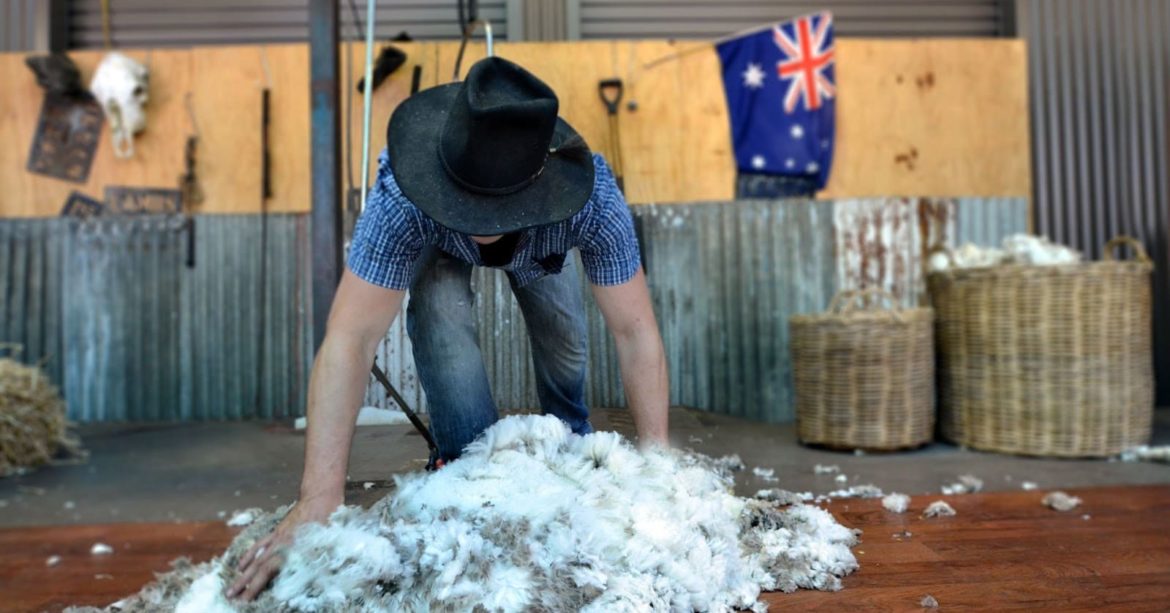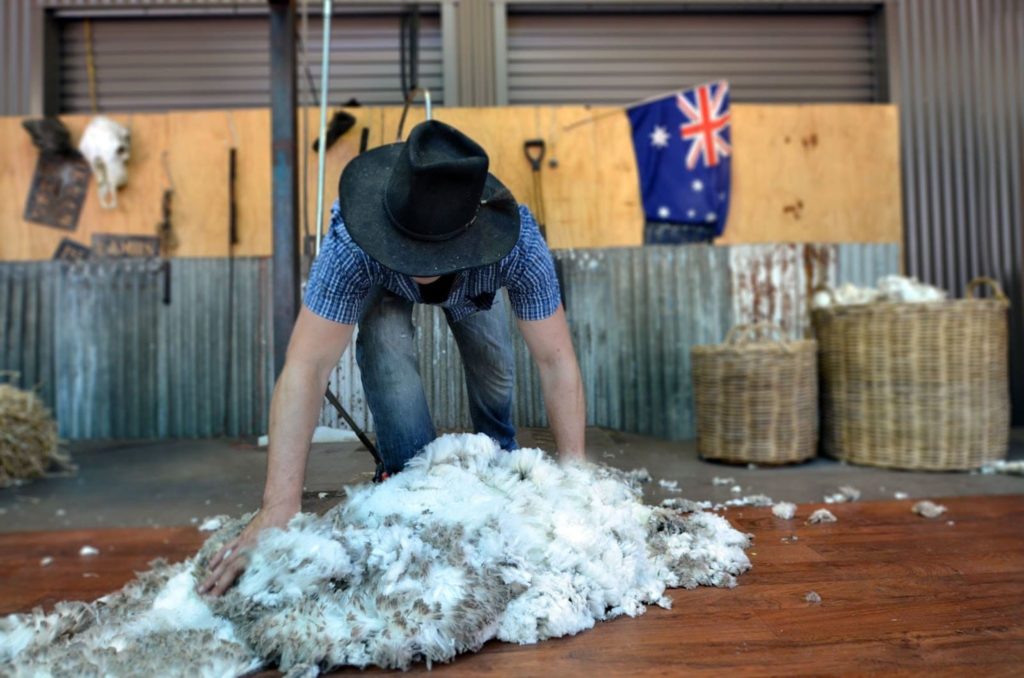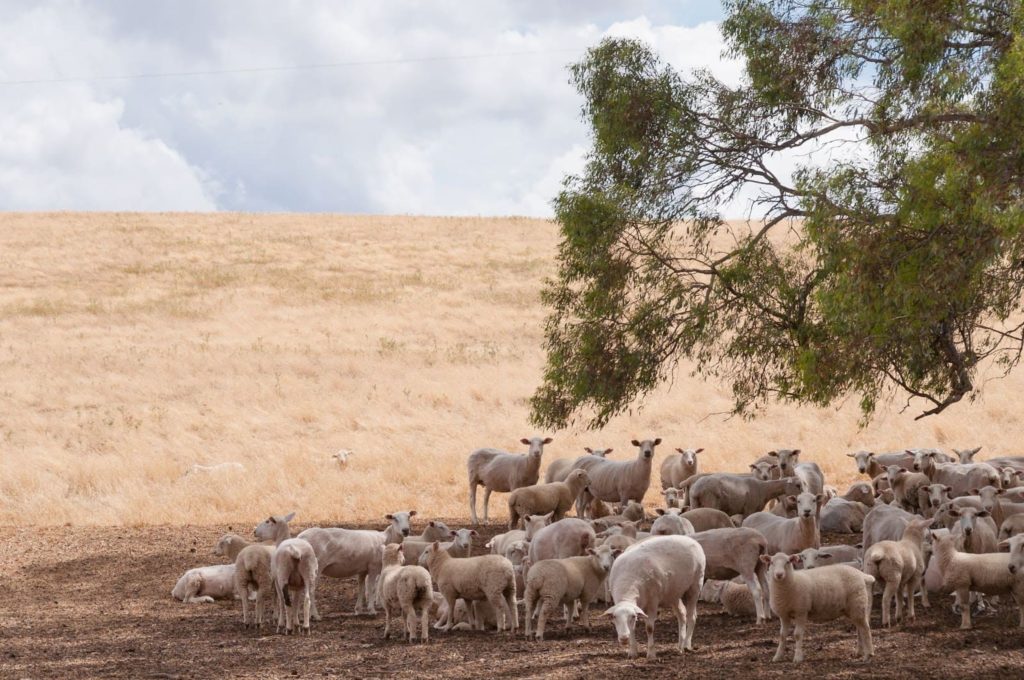The History of the Australian Wool Industry
The wool industry has been a major force in the economy and culture of Australia over the years. Even now, when other industries are more important financially, it holds a place in the heart and minds of the Australian public.
Wool is also making something of a comeback thanks to its positioning as a fashion trend. Of course, these fashions are a far cry from the start of the history of the wool industry in Australia some 225 years ago.
Key points
- In 1797, John Macarthur and Reverend Samuel Marsden imported Spanish merino sheep to Australia with the aim of selectively breeding them for the production of wool.
- The first exports of wool from Australia took place in 1807.
- The Australian wool industry boomed in the 1880s before encountering obstacles in the late 1890s including industrial action by shearers and lower wool prices.
- From the 1950s onwards other industries, such as mining and energy, have become more important to the Australian economy but the wool industry remains close the hearts of Australians and Australian merino wool is still in high demand.
Early years of the Australian wool industry
Prior to the late 18th century, the only sheep in the early colonies in Australia were fat-tailed and they were mostly used for meat.
This changed in 1797 when John Macarthur and Reverend Samuel Marsden imported Spanish merino sheep with the aim of selectively breeding them for the production of wool. Governor George King recognised the potential of the wool market and was responsible for the creation of the first textile mill in Parramatta.
However, Reverend Marsden and John Macarthur realised that exports were essential to the success of any wool market and the first of these exports took place in 1807. This exported wool was sold at Garraways Coffee House in London and is thought to have achieved a sale price of 124 pence per pound.
By the 1820s, the grazing industry was beginning to take over the Blue Mountains area and by 1840 Australia was producing in excess of two million kilos of wool annually. Although the production of wool was booming in Australia, there were threats to exports.
German exports of wool to England rose to 66% of the total wool imported by England in 1825. This led to Australia concentrating on the fine wool market.
Wool business booming by the 1880s
Any export issues were overcome and by 1870 Australia was the largest producer of wool in the world. In 1874, wool was shipped from Australia to Japan for the first time. This was followed in 1875 by the first shipment of wool to Shanghai.
This level of production, and introduction of new markets, led to the 1880s being a boom time in the history of wool production in Australia.
Sheep breeders attended large gatherings to sell stock and wool each year. Such gatherings and events were big news. This continued into the 1890s.
In 1894 the Sydney sheep sales took place in July and the Australian Pastoralists Review produced a booklet that gave an insight into connected industries at the time with advertisements for bookkeepers, wool consigners, and cargo shipping providers.
Lower wool prices and industrial action cause problems in the late 1890s
Later in the 1890s some issues arose to provide obstacles for the wool industry in Australia. These issues included:
- Reduced wool prices
- Drought causing lower sheep numbers
- Industrial action by shearers
However, positive developments helped the industry to recover at the start of the 20th century.
Early 20th century, the IWS and the Woolmark
One vital step in the development of the wool industry in Australia happened early in the 20th century. Education for those wishing to enter the industry began to be formalised with colleges such as the Sydney Wool Institute being founded.
In 1936, the International Wool Secretariat (IWS) was created. This institution represented wool growers in top exporting countries such as Australia, New Zealand, and South Africa with Uruguay joining later. The formation of the IWS was followed by the introduction of the Woolmark, in 1963.
1950s onwards – other industries begin to take over
The depression that followed the two world wars had a negative impact on the demand for wool, and prices. Although, the industry emerged from this impact in the 1950s, and began to boom again, other industries had started to take over financially.
Agricultural producers in Australia had begun to look towards wheat and cattle as ways of making a living. For those who continued to breed sheep, meat became a bigger market draw than wool.
The Australian wool industry today
The wool industry today has rebounded from several years when it stagnated to some extent. Australia is responsible for around 25% of the world’s greasy wool sales as well as 81% of superfine merino wool sales.
The industry has also been helped by wool becoming a major feature of current trends in the fashion industry. The trend for the use of wool means that merino wool from Australia is turning up in luxury fashion items across the globe.
All of this means that while industries like mining, energy, and metals have made more advancements over the years, the Australian wool industry is still extremely productive.
The original merino sheep from Spain have change since they were introduced to the country all those years ago, thanks to the change of climate and breeding practices. There are now three strains of Australian merinos in existence: Peppin, South Australian, and fine-wool Saxon and their wool remains popular.
The impact of the wool industry on Australian culture also remains intact. There is a nostalgic bond between Australians the sheep farming industry. It has also inspired poets such as Banjo Patterson and is the subject of traditional songs including Waltzing Matilda and Click Go the Shears.
The wool industry may not be the most important industry to the Australian economy right now but it’s still at the centre of most people’s hearts. And merino wool from Australia is treasured internationally for its durable and soft quality which makes it a popular choice for use not only in the fashion industry but also for producing everything from car seat covers to bedding.
The industry has certainly come a long way since merino sheep were first brought to the country by John Macarthur and Reverend Samuel Marsden back in 1797.
2 - 2Shares



